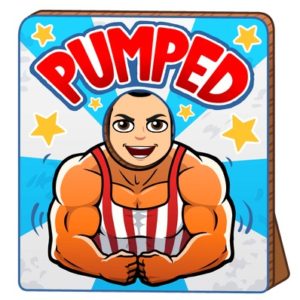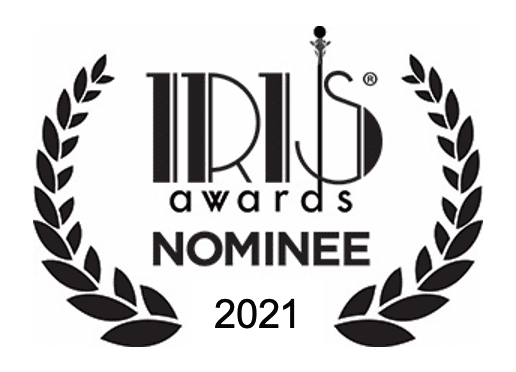— July 15, 2019 —
Editor’s Note: On this blog, I refer to my daughter as “Dear Daughter” (DD) and my wife as “Dear Wife” (DW).
Let it go,” my wife instructs whenever she catches me in front of the mirror of our bathroom vanity, pinching my jiggly love handles. I’m staring at the reflection of a body in transition.
I’d heard about the softer side of fatherhood – the research that links declines in testosterone and muscle mass to becoming a father – but I never thought adding one word to my identity (dad) would introduce a two-word certainty: dad bod.
You may recall the term’s explosion into pop culture in 2015. Clemson University sophomore Mackenzie Pearson published an article that went viral, titled “Why Girls Love the Dad Bod,” in which she claimed women are more attracted to men whose physiques are “a nice balance between a beer gut and working out” than gents with washboard abs. (Step aside, Joe Six-Pack.)
But as I approach the age of 45, I’m realizing dad bods are less about what women want and more about how a man sees himself in relation to what he once was and what he aspires to be.
Dad bod creeps in
The first signs of my dad bod appeared in the fall of 2014, shortly after the birth of my Dear Daughter (DD). The preferred notch on my belt seemed snugger than usual, thanks to a bit of squish around the waist that I chalked up to the sleep deprivation and questionable meal choices that mark the rite of passage for legions of new parents. I also had just turned 40, a milestone age that is known to mess with many a metabolism.
Life went on, but I refused to accept that me and dad bod were becoming a thing.
I ran charity 5Ks. I experimented with intermittent fasting. I lifted weights. But with each passing year of fatherhood and marriage, the outline of my abs slowly morphed into a miniature muffin top.

By the time DD was 2 years old, she had taken to resting her head on the pillow-like softness of my belly. She loved the fluffiness of it all. Me? Not so much. As a dad, I wanted to look and feel like a protector, a parental Guardian of the Galaxy. Fatherly flab was not part of my mental picture.
Then shortly before my 44th birthday, a small fold of fatty flesh developed under my chin. Sort of a gently sloping sag resembling a hammock between trees. I noticed my post-workout body aches and stiffness lingered longer than usual. And unruly gray hairs started appearing with regularity in new or unexpected places: my eyebrows, my nose, my chin, my temples, the crown of my head, and even my neck. For the first time, in a physically tangible way, I could see and feel myself aging.
More around the middle, mid-life
It seemed no coincidence these physical changes mirrored the dramatic shifts unfolding in my mid-life. My wife and I bought our first single-family home, concluding a gauntlet of paperwork, anxiety, and excitement. I quit my job as a vice president at a public relations firm and started a new gig with a global company. And after a year of navigating the health insurance labyrinth, we secured autism therapy for our daughter only to face a challenge common to parents of special needs children: transitioning to new routines.
For me, dad bod is now about shedding societal ideals of manhood and physical virility so that I can make room for the man I am becoming.
Through it all, my body changed and adapted to the season of life I found myself in. It did so in sickness and health, in good times and in bad, through poor sleep and deep worry, without complaint or reservation as revealed by the clean bills of health that came after annual physical exams. A sense of gratitude grew within me about the resiliency of my body in the face of life’s challenges.

It dawned on me that my strive to be fit is neither a desperate clinging to fleeting youth nor an attachment to a beach body aesthetic. It’s a rejection of the “dad bod” trope as reflected in this irreverent definition in Urban Dictionary: “The type of physique a man ‘earns’ when the increasing pressures of work life, married life, and especially fatherhood no longer allow him the time or drive to maintain a hard, toned figure. As a result, what was once a sculpted, chiseled frame digresses into a soft, flabby heaping pile of I Don’t Give A Sh*t Anymore.”
To be sure, I don’t expect to return to the lean runner’s body of my college days or the svelte waistline of my 30s. I just rebuff the idea that I’ve let myself go.
I still give a sh*t.
Dad bod assessment and acceptance
For me, dad bod is now about shedding societal ideals of manhood and physical virility – visible abs, thick chest, broad back, muscular arms and legs – so that I can make room for the man I am becoming, one who understands, to quote Antoine de Saint-Exupéry’s The Little Prince, that “what is essential is invisible to the eye”: love, trust, faith, friendship, empathy, honor.
I don’t appear to be alone. A 2018 nationally representative survey commissioned by the gym chain Planet Fitness found that “sixty-two percent of men with dad bods feel that having one has improved their lives. These men feel less concerned with their appearance (43 percent), are more accepting of themselves (42 percent) and are more confident (25 percent).”
It’s body positivity at its finest.
My friends in public health may caution against embracing dad bod as the new male norm, pointing to research that shows excess abdominal fat increases the risk of death from heart disease. It’s an important, sobering point that has all the sway of an old-school “The More You Know” public service announcement. It needs an update.

As I see it, saying yes to dad bod means saying yes to self-care, the kind of care men especially don’t do enough, the sort that can help prevent disease because it encourages making time each day for your body – and mind. That could be time to hit the gym, to rest, to eat healthier, to take a long drive, to be with those you love, to play a sport, to get a massage, to practice meditation or even make that long-delayed medical appointment – whatever it is that helps you be the best version of yourself. That version may have a few extra pounds. It may not run as fast as it once did or be as strong. But it’s here. And being here for ourselves and our families is the essence of Dad Bod.
“Chase me! Chase me! Please! Pretty pleeeeease!” my daughter, now 4, screams excitedly. The ritual is always the same. I stand up, raise my hands, curl my fingers into claws, and growl like a bear (she likes that part). Then off we go. Running through the kitchen, over the living room sofa, down the steps of our split level, and finally to the family room futon where she tries to evade my tickles by hiding headfirst under a blanket.
She doesn’t care how I look, just as long as I’m there.
Father on,

This article first appeared on City Dads Group.
1247 words





Leave a Reply